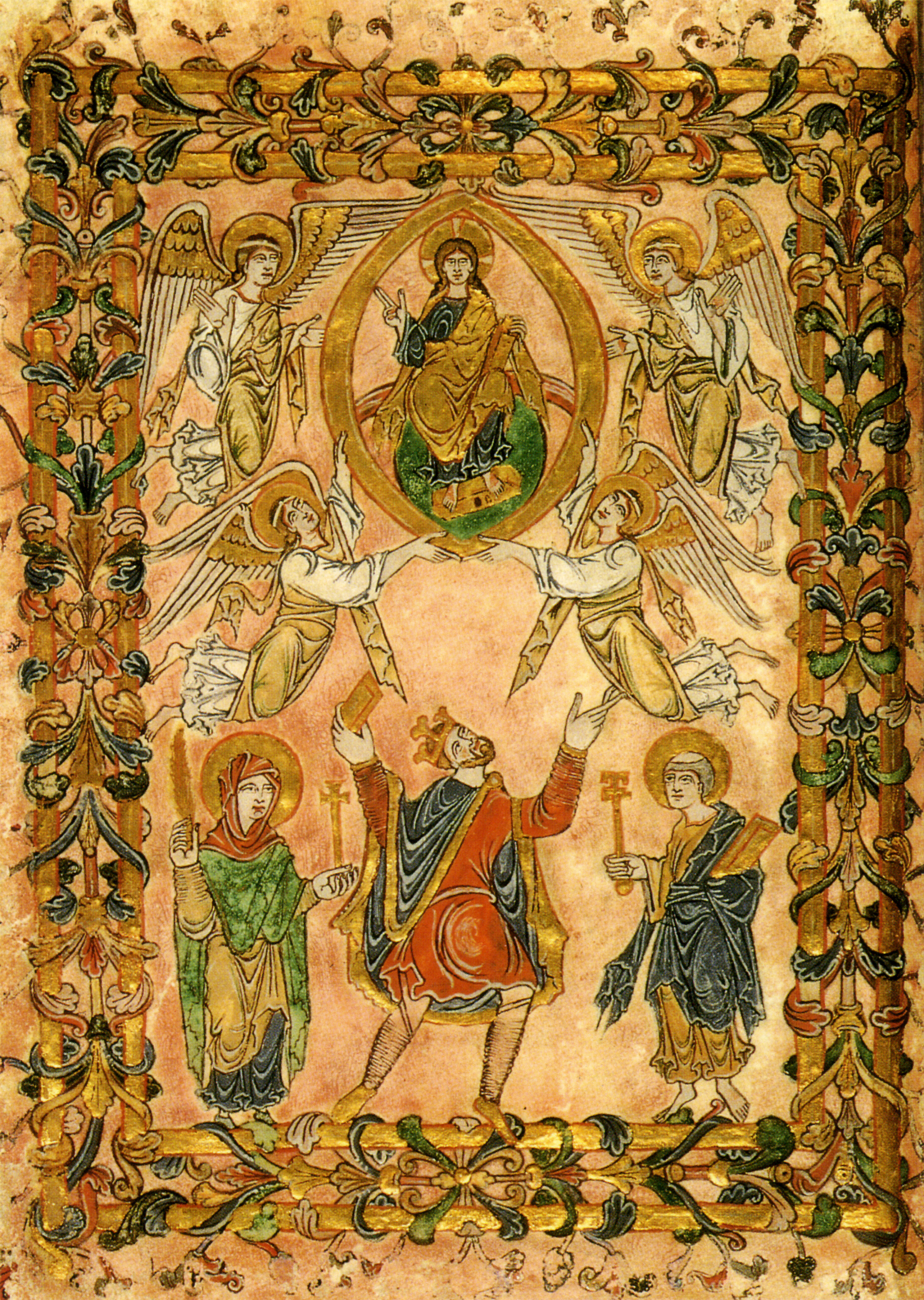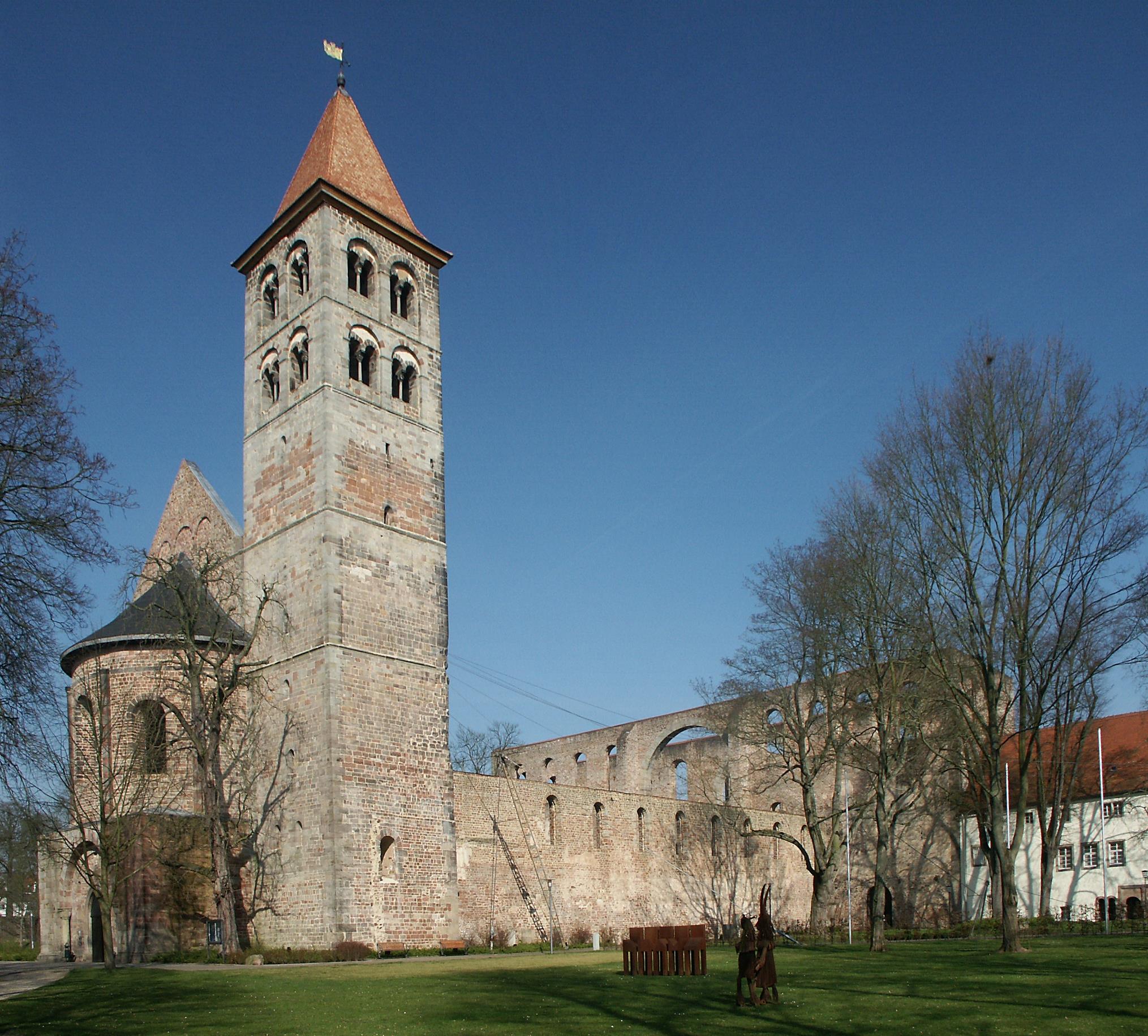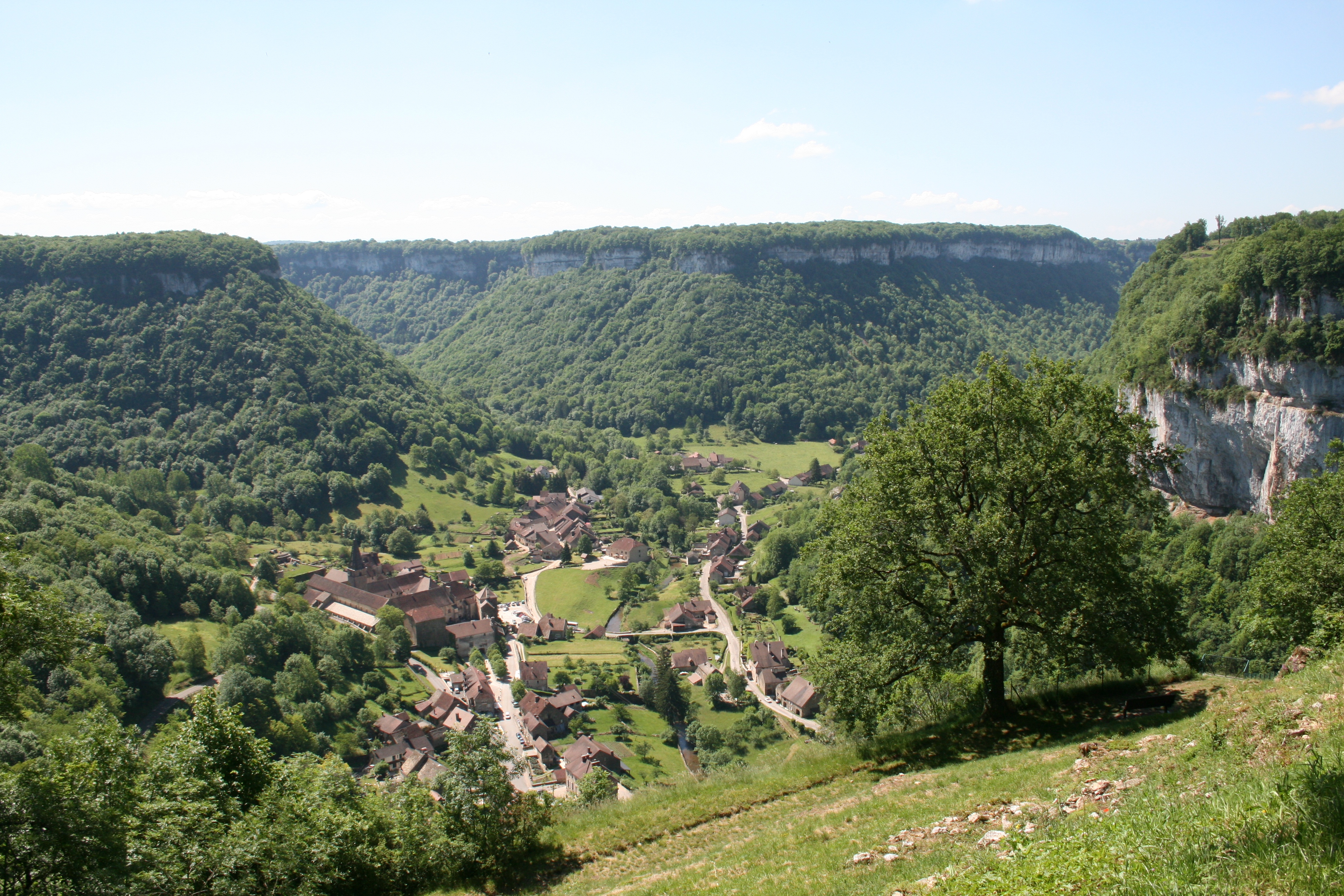|
Cluniac
The Cluniac Reforms (also called the Benedictine Reform) were a series of changes within medieval monasticism of the Western Church focused on restoring the traditional monastic life, encouraging art, and caring for the poor. The movement began within the Benedictine order at Cluny Abbey, founded in 910 by William I, Duke of Aquitaine (875–918). The reforms were largely carried out by Saint Odo (c. 878 – 942) and spread throughout France ( Burgundy, Provence, Auvergne, Poitou), into England (the English Benedictine Reform), and through much of Italy and Spain. Background In the early 10th century, Western monasticism, which had flourished several centuries earlier with St Benedict of Nursia, was experiencing a severe decline due to unstable political and social conditions resulting from the nearly continuous Viking raids, widespread poverty and, especially, the dependence of abbeys on the local nobles who controlled all that belonged to the territories under their jurisdict ... [...More Info...] [...Related Items...] OR: [Wikipedia] [Google] [Baidu] |
Cluny Abbey
Cluny Abbey (; , formerly also ''Cluni'' or ''Clugny''; ) is a former Benedictine monastery in Cluny, Saône-et-Loire, France. It was dedicated to Saint Peter. The abbey was constructed in the Romanesque architectural style, with three churches built in succession from the 4th to the early 12th centuries. The earliest basilica was the world's largest church until the St. Peter's Basilica construction began in Rome. Cluny was founded by Duke William I of Aquitaine in 910. He nominated Berno as the first abbot of Cluny, subject only to Pope Sergius III. The abbey was notable for its stricter adherence to the Rule of St. Benedict, whereby Cluny became acknowledged as the leader of western monasticism. In 1790 during the French Revolution, the abbey was sacked and mostly destroyed, with only a small part surviving. Starting around 1334, the Abbots of Cluny maintained a townhouse in Paris known as the Hôtel de Cluny, which has been a public museum since 1843. Apart from the n ... [...More Info...] [...Related Items...] OR: [Wikipedia] [Google] [Baidu] |
Saint Odo
Odo of Cluny (French: ''Odon'') ( 878 – 18 November 942) was the second abbot of Cluny. He enacted various reforms in the Cluniac system of France and Italy. He is venerated as a saint by the Catholic and Eastern Orthodox Churches. His feast day is 18 November. There is only one contemporary biography of him, the ''Vita Odonis'' written by John of Salerno. Early life Odo was born in about 878, the son of Abbo, feudal lord of Deols, near Le Mans and his wife Arenberga. According to the ''Vita'' later written by Odo's disciple John, the couple had long been childless, and one Christmas Eve, Abbo prayed to Our Lady to obtain for him the gift of a son. When the child was born, his grateful father entrusted the boy to the Church of St. Martin in Tours. Both his parents later joined monasteries. His brother Bernard also became a monk.Smith, Lucy Margaret Smith, ''The early history of the monastery of Cluny'', Oxford University Press,1920 While yet a child, Odo was sent first t ... [...More Info...] [...Related Items...] OR: [Wikipedia] [Google] [Baidu] |
Romanesque Architecture
Romanesque architecture is an architectural style of medieval Europe characterized by semi-circular arches. There is no consensus for the beginning date of the Romanesque style, with proposals ranging from the 6th to the 11th century, this later date being the most commonly held. In the 12th century it developed into the Gothic style, marked by pointed arches. Examples of Romanesque architecture can be found across the continent, making it the first pan-European architectural style since Imperial Roman architecture. The Romanesque style in England and Sicily is traditionally referred to as Norman architecture. Combining features of ancient Roman and Byzantine buildings and other local traditions, Romanesque architecture is known by its massive quality, thick walls, round arches, sturdy pillars, barrel vaults, large towers and decorative arcading. Each building has clearly defined forms, frequently of very regular, symmetrical plan; the overall appearance is one of simplic ... [...More Info...] [...Related Items...] OR: [Wikipedia] [Google] [Baidu] |
Peace And Truce Of God
The Peace and Truce of God ( lat, Pax et treuga Dei) was a movement in the Middle Ages led by the Catholic Church and one of the most influential mass peace movements in history. The goal of both the ''Pax Dei'' and the ''Treuga Dei'' was to limit the violence of feuding endemic to the western half of the former Carolingian Empire – following its collapse in the middle of the 9th century – using the threat of spiritual sanctions. The eastern half of the former Carolingian Empire did not experience the same collapse of central authority, and neither did England. The Peace of God was first proclaimed in 989, at the Council of Charroux. It sought to protect ecclesiastical property, agricultural resources and unarmed clerics. The Truce of God, first proclaimed in 1027 at the Council of Toulouges, attempted to limit the days of the week and times of year that the nobility engaged in violence. The movement survived in some form until the thirteenth century. Other strategies to ... [...More Info...] [...Related Items...] OR: [Wikipedia] [Google] [Baidu] |
Berno Of Cluny
Saint Berno of Cluny (French: ''Bernon'') or Berno of Baume (c. 850 – 13 January 927) was the first abbot of Cluny from its foundation in 909 until he died in 927. He began the tradition of the Cluniac reforms which his successors spread across Europe. Berno was first a monk at St. Martin's Abbey, Autun, and then at Baume Abbey about 886. In 890, he founded the monastery of Gigny on his own estates, and others at Bourg-Dieu and Massay. In 910, William I of Aquitaine, founder of Cluny, nominated him abbot of the new foundation. Berno placed the monastery under the Benedictine rule (founded by Benedict of Nursia and reformed by Benedict of Aniane). He resigned as abbot in 925, his abbeys being divided between his relative Vido and his disciple Odo of Cluny. He is regarded as a saint, with his feast day on 13 January. Background St Benedict of Nursia had founded his famous monastery at Monte Cassino in the 5th century, and from it, his ideas and his Rule would come to in ... [...More Info...] [...Related Items...] OR: [Wikipedia] [Google] [Baidu] |
English Benedictine Reform
The English Benedictine Reform or Monastic Reform of the English church in the late tenth century was a religious and intellectual movement in the later Anglo-Saxon period. In the mid-tenth century almost all monasteries were staffed by secular clergy, who were often married. The reformers sought to replace them with celibate contemplative monks following the Rule of Saint Benedict. The movement was inspired by Continental monastic reforms, and the leading figures were Dunstan, Archbishop of Canterbury, Æthelwold, Bishop of Winchester, and Oswald, Archbishop of York. In seventh- and eighth-century England, most monasteries were Benedictine, but in the ninth century learning and monasticism declined severely. Alfred the Great (871–899) deplored the decline and started to reverse it. The court of Æthelstan (924–939), the first king of the whole of England, was cosmopolitan, and future reformers such as Dunstan and Æthelwold learned from Continental exponents of Benedictin ... [...More Info...] [...Related Items...] OR: [Wikipedia] [Google] [Baidu] |
Lambert Of Hersfeld
Lambert of Hersfeld (also called Lampert; – 1082/85) was a medieval chronicler. His work represents a major source for the history of the German kingdom of Henry IV and the incipient Investiture Controversy in the eleventh century. Life What little is known of his life is revealed in scattered details from his own historical writings. Probably a Franconian by birth, of good family, he prepared for an ecclesiastical career at the cathedral school in Bamberg, where he received tuition by Anno of Steusslingen, the later Archbishop of Cologne. On 15 March 1058 Lambert entered the Benedictine abbey of Hersfeld as a monk. On September 16, he was also ordained as a priest in Aschaffenburg and therefore sometimes called Lampert of Aschaffenburg. After his elevation to the priesthood, he made a pilgrimage to Jerusalem. Back in Hersfeld in October 1059, Lambert worked in the cloister library and taught at the monastery school. In 1071 he visited the Benedictine abbeys of Siegburg and ... [...More Info...] [...Related Items...] OR: [Wikipedia] [Google] [Baidu] |
Pope Urban II
Pope Urban II ( la, Urbanus II; – 29 July 1099), otherwise known as Odo of Châtillon or Otho de Lagery, was the head of the Catholic Church and ruler of the Papal States from 12 March 1088 to his death. He is best known for convening the Council of Clermont which served as the catalyst for the Crusades. Pope Urban was a native of France, and was a descendant of a noble family from the French commune of Châtillon-sur-Marne. Reims was the nearby cathedral school where he began his studies in 1050. Before his papacy, Urban was the grand prior of Cluny and bishop of Ostia. As pope, he dealt with Antipope Clement III, infighting of various Christian nations, and the Muslim incursions into Europe. In 1095 he started preaching the First Crusade (1096–99). He promised forgiveness and pardon for all of the past sins of those who would fight to reclaim the holy land from Muslims and free the eastern churches. This pardon would also apply to those that would fight the Musl ... [...More Info...] [...Related Items...] OR: [Wikipedia] [Google] [Baidu] |
Baume Abbey
Baume Abbey, in its village of Baume-les-Messieurs, Jura, France, was founded as a Benedictine abbey not far from the still-travelled Roman road linking Besançon and Lyon. It stands near the source of the Dard. Around it the village of Baume-les-Messieurs is congregated. The abbey is known for its sixteenth-century retable. Early history Jean Mabillon followed an early tradition that the abbey had been founded by Saint Columbanus, which would place the foundation in the late sixth century. Bernard Prost says that in 732 Saracen raiders destroyed the obscure community of monks, along with neighboring Château-Châlon and the village of Lons-le-Saunier. It was refounded during the reign of Louis the Pious in the early ninth century by Saint Eutice, probably a disciple of Benedict of Aniane, who was revitalizing and reordering the Benedictine communities of the Gauls. In 817, when Emperor Louis at Aachen divided the monasteries in his lands into three categories, ''mona ... [...More Info...] [...Related Items...] OR: [Wikipedia] [Google] [Baidu] |
Christian Monasticism
Christian monasticism is the devotional practice of Christians who live ascetic and typically cloistered lives that are dedicated to Christian worship. It began to develop early in the history of the Christian Church, modeled upon scriptural examples and ideals, including those in the Old Testament, but not mandated as an institution in the scriptures. It has come to be regulated by religious rules (e. g. the Rule of Saint Augustine, Anthony the Great, St Pachomius, the Rule of St Basil, the Rule of St Benedict,) and, in modern times, the Canon law of the respective Christian denominations that have forms of monastic living. Those living the monastic life are known by the generic terms monks (men) and nuns (women). The word ''monk'' originated from the Greek (, 'monk'), itself from () meaning 'alone'. Christian monks did not live in monasteries at first, rather, they began by living alone as solitaries, as the word might suggest. As more people took on the lives o ... [...More Info...] [...Related Items...] OR: [Wikipedia] [Google] [Baidu] |
Benedictine Order
, image = Medalla San Benito.PNG , caption = Design on the obverse side of the Saint Benedict Medal , abbreviation = OSB , formation = , motto = (English: 'Pray and Work') , founder = Benedict of Nursia , founding_location = Subiaco Abbey , type = Catholic religious order , headquarters = Sant'Anselmo all'Aventino , num_members = 6,802 (3,419 priests) as of 2020 , leader_title = Abbot Primate , leader_name = Gregory Polan, OSB , main_organ = Benedictine Confederation , parent_organization = Catholic Church , website = The Benedictines, officially the Order of Saint Benedict ( la, Ordo Sancti Benedicti, abbreviated as OSB), are a monastic religious order of the Catholic Church following the Rule of Saint Benedict. They are also sometimes called the Black Monks, in reference to the colour of their religious habits. The ... [...More Info...] [...Related Items...] OR: [Wikipedia] [Google] [Baidu] |
Burgundy
Burgundy (; french: link=no, Bourgogne ) is a historical territory and former administrative region and province of east-central France. The province was once home to the Dukes of Burgundy from the early 11th until the late 15th century. The capital of Dijon was one of the great European centres of art and science, a place of tremendous wealth and power, and Western Monasticism. In early Modern Europe, Burgundy was a focal point of courtly culture that set the fashion for European royal houses and their court. The Duchy of Burgundy was a key in the transformation of the Middle Ages toward early modern Europe. Upon the 9th-century partitions of the Kingdom of Burgundy, the lands and remnants partitioned to the Kingdom of France were reduced to a ducal rank by King Robert II of France in 1004. The House of Burgundy, a cadet branch of the House of Capet, ruled over a territory that roughly conformed to the borders and territories of the modern administrative region of Burgun ... [...More Info...] [...Related Items...] OR: [Wikipedia] [Google] [Baidu] |






